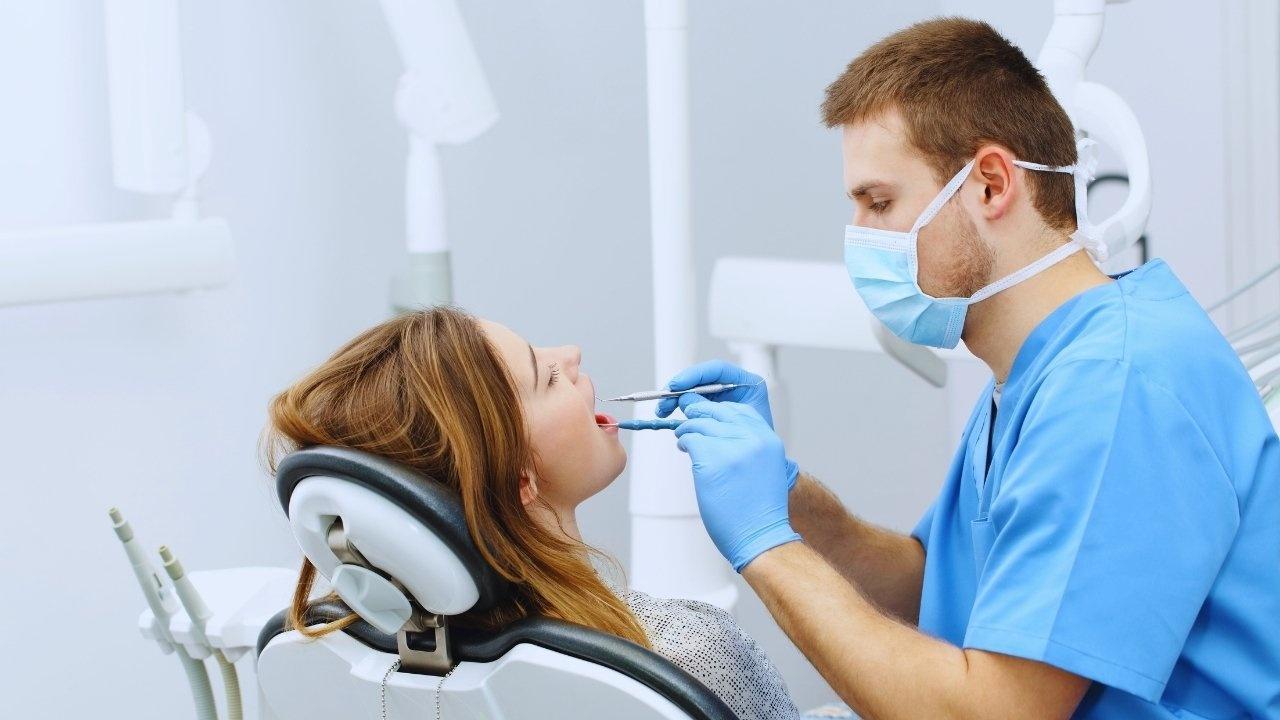
Join 10k+ people to get notified about new posts, news and tips.
Do not worry we don't spam!

Post by : Anis Farhan
Maintaining oral health extends beyond just aesthetics. Silent conditions like tooth decay, gum disease, and oral cancers can linger for years before symptoms arise. Early detection is crucial, leading to more straightforward treatments, cost savings, and enhanced patient experiences.
Typically, dental check-ups are reactive, with many people seeking care only when issues arise. Limited access to specialists in certain regions exacerbates the problem. AI-driven screening technologies aim to transition from this reactive model to a proactive strategy. By uncovering risks and early indicators of diseases before significant interventions are needed, these tools set the stage for faster and more precise diagnostics, especially in underserved communities.
AI is revolutionizing the approach to dental health screening with several key functions:
Leveraging deep learning, AI algorithms can scrutinize dental X-rays, panoramic images, and intraoral captures to identify issues such as cavities, missing teeth, and other abnormalities. These systems can process high volumes of images swiftly, ensuring rapid diagnosis while maintaining accuracy.
Beyond simple disease indicators, AI tools now offer health scores that correlate with severity, risk assessments, and treatment estimates. These metrics assist clinicians in determining patient priorities and inform broader health strategy planning.
For areas lacking resources, AI applications using smartphone cameras or portable scanners are being trialed. These enable community-level screenings, enhancing accessibility and fostering early intervention where conventional dental services are limited.
AI's capacity to analyze large datasets can spotlight trends and populations at risk, guiding targeted health initiatives and optimizing resource distribution for community dental health.
As a decision-aiding resource, AI can highlight potential areas of concern, streamline evaluation times, and standardize assessments. Dentists can thereby allocate more time to patient care rather than laborious image analyses.
Numerous practical applications underscore AI's promise in the dental sector:
Organizations are deploying AI-enabled scanners to aid in identifying frequent issues like decay and misalignment, effectively improving patient flow and reducing wait times.
Research initiatives from various regions demonstrate that AI's capabilities can rival or even surpass human expertise in certain diagnostic tasks.
Mobile screening initiatives in community settings are proving effective, allowing for earlier identification of dental complications among populations lacking access to regular care.
These scenarios exemplify how AI-driven screening in dentistry is advancing from concept to tangible operational models.
Quick identification of dental problems leading to less invasive treatments and cost reductions.
Accessible screening via mobile solutions and shorter appointments.
Improved service for remote, underserved, and busy demographics.
Less dependence on manual image evaluation, allowing more focus on complex procedures.
Enhanced standardization promotes consistency and diminishes discrepancies across practitioners.
Paves the way for timely intervention by prioritizing high-risk individuals.
Risk metrics facilitate targeted resource allocation for high-risk populations.
Prompt detection helps minimize the need for more extensive treatments.
Data aggregation aids in planning and executing community-based preventive measures.
The efficacy of AI models is contingent on having high-quality, representative datasets. Disparities in imaging equipment, demographics, and quality control can skew results and influence accuracy across varied settings.
Though AI shows remarkable results in controlled trials, translating that success to real-life scenarios still poses challenges, particularly across diverse populations and varying imaging techniques.
Effective incorporation hinges on staff training, modifications to existing workflows, and transparent patient referral processes. Without careful integration, the potential benefits of AI may not be fully realized.
Handling dental health data necessitates adherence to privacy guidelines, securing patient consent, and maintaining transparency. Addressing the accountability of AI-generated outcomes is vital.
AI should serve as a supportive tool rather than a substitute for clinical decision-making. It's essential to remember that a clean bill of health from AI does not preclude the need for professional evaluations.
Even with affordable AI models, geographical disparities in technology access can perpetuate inequalities in dental health screenings.
Choose solutions validated in real-world clinical environments.
Align imaging methods with AI requirements.
Train staff to interpret AI results effectively.
Set up clear referral channels for flagged cases.
Uphold data privacy and adhere to local regulations.
Continuously assess AI performance and treatment outcomes.
Gauge cost-effectiveness and impact on patient scheduling.
Inform patients on AI's role as an auxiliary tool, not a substitute for expert evaluation.
Future AI solutions may merge various diagnostic data sources, enhancing risk assessment capabilities.
The future holds promise for AI to forecast dental risks, allowing for preventative measures before conditions worsen.
Portable and smartphone-based AI tools will broaden access in underserved regions.
AI innovations will offer personalized care recommendations, promoting hygiene and ongoing health monitoring.
Advancements in regulatory frameworks will clarify performance metrics, usage protocols, and practitioner qualifications for AI systems.
Wider adoption of AI screening will likely yield reduced costs, aiding public health campaigns and school dental programs.
Inquire with dental care providers about AI-supported diagnostics.
Recognize that early detection can prevent extensive treatments.
Maintain regular hygiene habits and balanced diets.
Acknowledge that AI complements, rather than replaces, routine check-ups and professional counsel.
AI-enhanced dental screenings are shifting the paradigm from reactive care to proactive health management. By facilitating early detection and risk-based preventive measures, AI is poised to significantly improve patient outcomes and streamline healthcare systems.
However, the successful application of these technologies depends on high-quality data, vigilant human oversight, and seamless integration into daily practices. When combined with informed practitioners and engaged patients, AI screening stands to play a pivotal role in upholding dental health and elevating care quality.










Paramount+ to Stream PBR’s 'Unleash the Beast' in New Five-Year Deal
Paramount+ will stream PBR’s 'Unleash the Beast' across the U.S. starting this December under a five

Zohran Mamdani Clinches NYC Mayoral Seat as Victory Speech Blends Politics and Bollywood
Zohran Mamdani won New York City's mayoral race, becoming the city's first Muslim and South Asian ma

India Wins First Women’s World Cup 2025 Title
India lifts its maiden Women’s World Cup 2025 title! Harmanpreet Kaur’s team stuns South Africa in a

Manuel Frederick, 1972 Olympic Bronze Goalkeeper, Dies at 78
Manuel Frederick, a member of India’s 1972 Olympic bronze hockey team, has died in Bengaluru at 78 a

Muhammad Hamza Raja Wins IFBB Pro Card Puts Pakistan & UAE on Global Stage
Pakistani bodybuilder Muhammad Hamza Raja earns IFBB Pro Card in Czech Republic, showcasing Dubai’s

Shreyas Iyer’s Recovery Underway After Spleen Laceration in Sydney ODI
Shreyas Iyer is recovering after a spleen laceration sustained while taking a catch in the Sydney OD